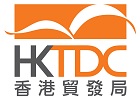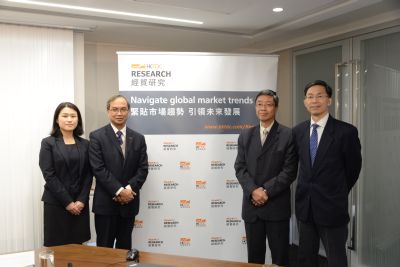|
| Wednesday, 23 March 2016, 18:00 HKT/SGT | |
| |  | |
Source: HKTDC | |
|
|
|
|
| Economists Reveal "Make in India" Opportunities & Examine Potential of Chinese Mainland Cosmetics and Skincare Markets |
HONG KONG, Mar 23, 2016 - (ACN Newswire) - The Hong Kong Trade Development Council's (HKTDC) Research Department today (23 March) announced its latest Export Index, which monitors the sentiment of Hong Kong traders and gauges near-term export prospects. The HKTDC Export Index for the first quarter of 2016 (1Q16) edged up to 37.3, a rise of 5.9 from the fourth quarter of 2015. This is the highest level since the second quarter of last year, although it is still below the watershed mark of 50. A reading below 50 indicates sluggish export performance over the short-term. Nicholas Kwan, Director of Research, HKTDC, said: "Despite the decline of export activities in most industries, the rise of the index might indicate that the export market is stabilising. Therefore, at the moment, Hong Kong's exports for 2016 are projected to level off at the 2015 level."
 | | The HKTDC's Research team announce results of the latest Export Index and discuss findings from their recent surveys on India's strengths as an alternative production base and the potential of the Chinese mainland cosmetics and skincare markets. |
Electronics industry relatively optimistic on export prospects
The indices reflected different changes in export sentiment for major industries. The indices for electronics, toys, jewellery and machinery recorded an increase. The index for electronics saw the greatest leap, reaching 38.4, up 7.1 from the previous quarter. The indices for clothing and timepieces, however, reported lower readings, with sentiment in the timepiece industry sliding 5.3 to 33.2.
"Exporters' confidence improved for all major export markets," Daniel Poon, Principal Economist (Global Research), HKTDC, noted. "The indices, however, were still below 50, signalling that exporters are cautious about the prospects for exports." Among the four major markets, Japan recorded the highest reading, up 0.8 quarter-on-quarter to 47.4. This was followed by the United States (46.3), Chinese mainland (45) and the European Union (44.8).
For the first quarter of this year, the trade value index and procurement index both rebounded. The former rose to 41.6 from 38.6, while the latter edged up to 36.3 from 35.9. However, they remain below the important 50 level, indicating that unit prices are likely to continue sliding, and may signal a fall in input costs and sluggish demand ahead.
In addition, labour cost pressure on the mainland persists. Fifty-three per cent of the respondents stated that labour costs in the Chinese mainland had increased in the first quarter of this year, compared to 50 per cent of respondents who shared that view in the last quarter of 2015. However, the increase is less steep than that of previous quarters.
India: Alternative production base with a huge market
The sustained rise in production costs on the mainland has blunted the competitive edge of many Hong Kong companies with labour-intensive factories located on the mainland, prompting them to seek alternative production bases elsewhere. Following its recent fact-finding trip to India, HKTDC Research believes that some Hong Kong companies might consider relocating their production bases there.
"Take garment manufacturing as an example. The Indian garment manufacturing industry has been expanding exports in recent years, with many major exporters successfully building up business contacts with international buyers," said Dickson Ho, Principal Economist (Asian and Emerging Markets), HKTDC. "With advantages in raw materials and prospects for vertical integration, India is a strong production base and a location worth considering for factories with labour-intensive manufacturing, such as garment-making." Mr Ho pointed out that, as a production base, India also enjoys many other advantages, including relatively low taxes under free trade agreements within and beyond the region, labour costs that are lower than those on the mainland, growing labour productivity (which recorded a growth rate of 3.8% in 2014), and the presence of many major seaports, which help contribute to India's strong logistics performance compared with other production bases in South Asia.
Mr Ho added that the Indian government has recently implemented a number of business-friendly policies to encourage foreign direct investment (FDI) in a wider range of industries and streamline the government approval process. Specific investment incentives are provided for selected industries, for example the electronics sector, and tax incentives are available to exporters. India's laws and regulations are often lamented for being overly complex, therefore Mr Ho advised Hong Kong companies that they can initially consider relocating factories to industrial parks with more favourable conditions.
Gujarat in western India, for example, provides a relatively stable electricity supply and well-established transportation system connecting industrial areas with ports. Some industrial estates even offer plug-and-play services for smaller manufacturers.
Mr Ho also indicated that with the world's second-largest population, India's retail landscape is evolving rapidly, and is currently estimated at about US$600 billion with an average annual growth of 12 per cent. With the surge of middle-class consumption, the retail sector is projected to keep expanding. He believes that Hong Kong companies should look into the opportunities for exploring the Indian domestic market.
Big potential seen in mainland cosmetics and skincare markets
Demand for cosmetics and skincare products has seen sustained growth among mainland consumers. To understand consumption habits for these products among both male and female consumers on the mainland, HKTDC Research conducted a series of online questionnaire surveys, consumer focus group discussions and company visits to various cities between October and December last year.
Most of the female respondents said they wear makeup regularly, among which the proportion of young women (aged 20-30) had a habit of wearing makeup rated at 88 per cent, compared to 83 per cent for those aged between 31 and 45. Respondents use an average of 4.7 different cosmetic products. The main purchasing considerations reported were product benefits/efficacy, brand recognition and word-of-mouth.
Heading the research, Alice Tsang, Economist (Greater China Research Team), HKTDC, said: "The survey shows that when it comes to buying and using cosmetic products, 52 per cent of the respondents would stick to several specific brands, showing that their brand loyalty is quite high. When a new brand enters the mainland market, it has to offer innovative products or novel makeup themes before it can attract the attention of consumers. It is believed that if a brand organises special makeup classes about its new products, this can arouse greater interest among consumers."
Overall, 85 per cent of female consumers have their own skincare routine and use on average 7.7 skincare products. Among imported skincare product brands, Korean brands are more popular with young respondents, while mature consumers (31-45 age group) favour European and US brands. However, the major considerations when buying skincare products are still product quality, ingredients and value for money.
The prevalence in mainland society of males using skincare products is still relatively low, yet most male respondents said they believe such products help to make their skin look cleaner, healthier and firmer. Sixty-three per cent of male respondents on the mainland use only cleansing milk, lotion or face cream. Just 37 per cent of the respondents have their own skincare routine, using on average 3.4 different skincare products.
Although only five per cent of the male respondents use makeup everyday, 29 per cent would use makeup for certain occasions, so as to give their skin a smoother and cleaner look. They use primarily sunscreen/sunblock and beauty balm cream.
Ms Tsang pointed out that currently not many male cosmetics and skincare brands are available on the mainland market. When a new brand enters the market, it can attract interest among male consumers with cosmetics and skincare products that feature a special formula for men, and by employing effective sales people. Brands should also pay attention to attractive packaging and design. For instance, simpler designs with neutral colours, may arouse greater interest among male consumers, according to Ms Tsang.
Website: http://research.hktdc.com/
HKTDC Export Index 1Q16: http://bit.ly/1q1JQHV
Podcast: Make In India: Is it Time to Re-assess the Sub-continent? http://bit.ly/1RjDHiZ
Photo Download: https://bit.ly/1RfPmkn
To view press releases in Chinese, please visit http://mediaroom.hktdc.com/tc
Contact:
HKTDC
Communication and Public Affairs Department
Joe Kainz
Tel: +852 2584 4216
Email: joe.kainz@hktdc.org
Topic: Research / Industry Report
Source: HKTDC
Sectors: Trade Shows, Retail & eCommerce, Daily News
https://www.acnnewswire.com
From the Asia Corporate News Network
Copyright © 2024 ACN Newswire. All rights reserved. A division of Asia Corporate News Network.
|
|
|
|

|
|
|
|